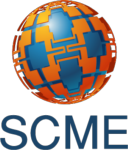Biomolecular Applications Learning Module

Module Description:
This module, from Support Center for Microsystems Education (SCME), provides "an overview of biomolecules, what are they, types of biomolecules, and how microtechnology is using biomolecules or exploiting their functions for micro and nanosized transducers, sensors and actuators." This module is divided into the following six units: Knowledge Probe (KP or pre-test), Primary Knowledge (Reading Unit), Biomolecular Functions Activity, The Scale of Biomoleculars Activity, Biological Motors Activity, and Final Assessment.
Module Contents:
This module includes six instructor guides, six participant guides, and a presentation. PDF and DOC versions are provided for all of the guides. The included guides are Biomolecular Applications for bioMEMS Primary Knowledge, Biomolecular Applications for bioMEMS Learning Module, three activities, and a Final Assessment. Instructor guides include additional content such as instructor notes and questions and answers.
Biomolecular Applications for bioMEMS Primary Knowledge is an instructional unit with the following learning objectives:
- State the types of biological structures that are useful in bioMEMS.
- Describe at least three (3) types of functions that biological structures can provide in bioMEMS design.
- Describe two applications of biological components being used in bioMEMS.
The following sections are included in this unit guide: Introduction, Learning Module Objectives, Key Terms, What are biomolecules, Biomolecules in MEMS Devices, Biomolecules used in bioMEMS, and more.
The Biomolecular Functions Activity provides students "the opportunity to explore the function of biomolecules and the parallels to equivalent macroscopic components." Prior to beginning this activity, students should read through the Biomolecular Applications for bioMEMS Primary Knowledge unit.
In the Scale of Biomolecules Activity, students are provided "the opportunity to further explore biomolecules by relating the size of biomolecules to other molecules and cells." After completing this activity, students will be familiar with the scale of cells and biomolecules which will assist them in the design of bioMEMS.
The Biological Motors Activity provides students "the opportunity to further explore biomolecules by studying the action of biological motors and their ATP energy source." This activity includes the following objective:
- Demonstrate your understanding of molecule motors by watching three (3) on-line movies and correctly answering questions at the end of each movie.
The Biomolecular Applications for bioMEMS - Assessment includes 10 multiple choice questions and a table where students match the type of molecule with its bioMEMS function. The assessment is intended to be given at the conclusion of the learning module.
A presentation is also included that provides a unit overview, learning objectives, and information about biomolecules. The presentation is provided in both PDF and PowerPoint formats.
For orientation purposes App_BioMEM_P1_KP36_IG.pdf is included as a separate attachment and offers a sample of the type of material included in this module.
Below is a list of the files included in the .zip attachment. The size of each file is included in parenthesis.
Biomolecular Applications Learning Module (34 files, 15.5 MB)
- Instructor Guides
- Docs
- Biomolecular Functions Activity Instructor Guide (App_BioMEM_AC36a_IG_August2017.docx 131 KB)
- The Scale of Biomolecules Activity Instructor Guide (App_BioMEM_AC36b_IG_August2017.docx 138 KB)
- Biological Motors Activity Instructor Guide (App_BioMEM_AC36c_IG_August2017.docx 148 KB)
- Biomolecular Applications for bioMEMS - Assessment Instructor Guide (App_BioMEM_FA36_IG_August2017.docx 128 KB)
- Biomolecular Applications for bioMEMS Learning Module (App_BioMEM_P1_KP36_IG_August2017.docx 158 KB)
- Biomolecular Applications for bioMEMS Primary Knowledge Instructor Guide (App_BioMEM_PK36s_IG_August2017.docx 2.5 MB)
- PDFs
- Biomolecular Functions Activity Instructor Guide (App_BioMEM_AC36a_IG.pdf 140 KB)
- The Scale of Biomolecules Activity Instructor Guide (App_BioMEM_AC36b_IG.pdf 136 KB)
- Biological Motors Activity Instructor Guide (App_BioMEM_AC36c_IG.pdf 138 KB)
- Biomolecular Applications for bioMEMS - Assessment Instructor Guide (App_BioMEM_FA36_IG.pdf 147 KB)
- Biomolecular Applications for bioMEMS Learning Module (App_BioMEM_P1_KP36_IG.pdf 166 KB)
- Biomolecular Applications for bioMEMS Primary Knowledge Instructor Guide (App_BioMEM_PK36s_IG.pdf 1.5 MB)
- Docs
- Participant Guides
- Docs
- Biomolecular Functions Activity Participant Guide (App_BioMEM_AC36a_PG_August2017.docx 130 KB)
- The Scale of Biomolecules Activity Participant Guide (App_BioMEM_AC36b_PG_August2017.docx 136 KB)
- Biological Motors Activity Participant Guide (App_BioMEM_AC36c_PG_August2017.docx 141 KB)
- Biomolecular Applications for bioMEMS - Assessment Participant Guide (App_BioMEM_FA36_PG_August2017.docx 123 KB)
- Biomolecular Applications for bioMEMS Learning Module (App_BioMEM_P1_KP36_PG_August2017.docx 156 KB)
- Biomolecular Applications for bioMEMS Primary Knowledge Participant Guide (App_BioMEM_PK36s_PG_August2017.docx 2.5 MB)
- PDFs
- Biomolecular Functions Activity Participant Guide (App_BioMEM_AC36a_PG.pdf 121 KB)
- The Scale of Biomolecules Activity Participant Guide (App_BioMEM_AC36b_PG.pdf 133 KB)
- Biological Motors Activity Participant Guide (App_BioMEM_AC36c_PG.pdf 121 KB)
- Biomolecular Applications for bioMEMS - Assessment Participant Guide (App_BioMEM_FA36_PG.pdf 130 KB)
- Biomolecular Applications for bioMEMS Learning Module (App_BioMEM_P1_KP36_PG.pdf 149 KB)
- Biomolecular Applications for bioMEMS Primary Knowledge Participant Guide (App_BioMEM_PK36s_PG.pdf 1.5 MB)
- Docs
- Presentation
- Biomolecular Applications for bioMEMS (Biomolecular_Apps_presentation.pdf 3 MB)
- Biomolecular Applications for bioMEMS (Biomolecular_Apps_presentation.pptx 1.5 MB)
About this Resource


Comments